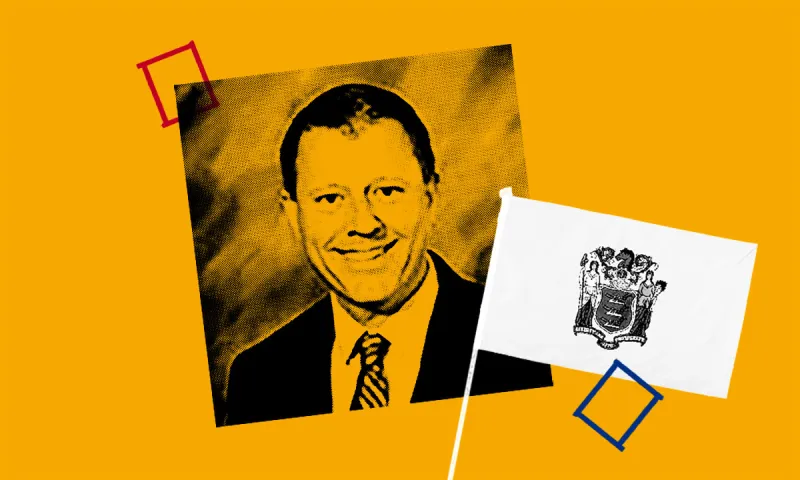
Perhaps the last New York visitor to New Jersey’s state investment office for a while arrived Friday for the first major interview with chief Corey Amon since his appointment almost a year ago.
Substantial limits on travel and visitors, to control the spread of the coronavirus, have gone into effect for state employees. Not that it makes much of a difference for Amon, who prefers to stay with his Trenton-based team running $80 billion in pension assets, rather than gallivant from conference to conference.
“I could be speaking at a conference every week if I really wanted to,” Amon told Institutional Investor in the interview. “And I don’t need the attention necessarily. Right now, there are significant restrictions that were just put in place. I’m not looking for any exceptions.”
Amon, 47, officially took over one of the largest U.S. retirement systems late last March, after serving as interim chief since July 2018. He came to the state investment office as deputy director more than five years ago, leaving his assistant treasurer role at Fortune 500 company Ryder System.
New Jersey’s Division of Investment (DOI) has never struggled to draw and develop talented investors. With a massive portfolio and equidistant location between New York City and Philadelphia, the organization can tap into vast pools of ambitious, often young, financiers.
The issue is keeping them.
“Turnover is a problem,” then-investment committee chair Tom Byrne told II when Amon’s predecessor Christopher McDonough stepped down in 2018. “Compensation and the working environment are both difficult, and it makes it hard to retain top people.”
Amon is set on fixing those issues — a battle many have waged, but he’s beginning to win via diplomacy. In coming weeks, the DOI and recruiting firm EFL Associates will begin searches for key positions, including a deputy director and head of alternatives.
How much they’ll make isn’t clear, but Amon implied an improvement over the current rates. McDonough made $200,000 as director, according to public disclosures.
“We’ve gained traction and we’ve got buy in from the administration,” Amon said. “They’ve been very supportive of us to increase compensation. We think that the career opportunity here can be very compelling and that’s what we’re going to sell.”
For example, he went on, “I live 20 minutes away in a beautiful neighborhood. My kids have benefited from excellent schools. You combine that with work life balance and really compelling career opportunities from a professional development perspective, I think we’ll be able to attract some talent. When you have a portfolio of this size of magnitude, you need a strong team around you.”
He redeployed a large part of that team over the summer, moving about $23 billion in U.S. equities from active in-house management to passive. The DOI’s internal staff directly invests and trades about three-quarters of its assets to save on outside fees, while focusing manager-selection efforts on alternative asset classes like private equity.
“The reality in the marketplace is that most active managers underperform, and they are more likely to underperform in the most efficient markets. The U.S. has the most efficient equity market in the world and it’s very difficult to add value,” Amon said. Ever the diplomat, he brought data to the State Investment Council, got their buy in, and spoke to the state treasurer before making moves.
“It’s important to socialize it,” he went on, laying out the case. “We think that it’s in the best interest of the pension fund and we think that it will free up a lot of our resources, costs, and expenses. Our commission costs go down dramatically as a result of this and it’s real money for our participants.”
Moving tens of billions of dollars is the sexy work of pension investing. But the less glamorous aspects get their due, as well, such as a multi-year project underway to replace the DOI’s dated technology infrastructure.
Providers have been bidding on a major contract to supply a single new platform for running the portfolio, including risk systems, compliance, and modeling. Amon can’t talk about the process, as it’s in a mandated blackout period, but expects to interview potential vendors later this year.
As much as new technology and a passive U.S. stock portfolio will simplify life at the DOI, another shift has made Amon’s job more complicated.
New Jersey’s fire and police pension system (PFRS) is spinning out to build its own administration, and eventually, its own portfolio. The DOI team will continue to run that fund, facing a new set of board meetings, reports, and asset allocation targets. All of which sounds like unnecessary complexity?
“I will concede to complex,” Amon demurred. “The PFRS board is in a position as a policy-making board to establish their own asset allocation. And we want to work with them. We’ll give them our best ideas. It will be ultimately their decision and then we’ll implement it on their behalf.”
With that spin-out underway, Amon’s eager to begin an “ambitious expansion” of his investment team. “Once they’re in place, I’ll probably have more flexibility. I’ve avoided a lot of travel already, because to be honest with you, I really needed to be in the office as much as I can be.”
With the state’s new coronavirus policies, the office may be the only place Amon’s heading for a while.





